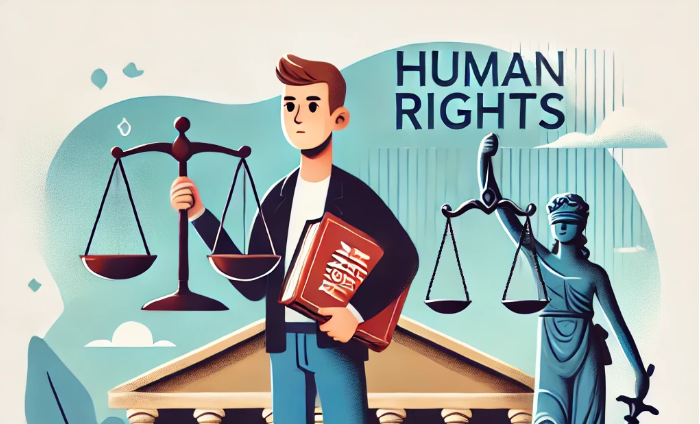Are you wondering how human rights shape criminal punishment?
You really start to notice how human rights shape criminal law when you sit in courtrooms week after week. I did that for five years. The tension between state power and individual freedom is in the air when someone faces 10 years and the judge decides if their Charter rights got trampled.
Let’s talk about the Canadian Charter of Rights and Freedoms. It came in 1982. Since then, criminal law hasn’t been the same. You can’t just arrest someone and figure out the paperwork later. Section 10 of the Charter makes sure people get told why they’re being arrested and gives them access to a lawyer right away. You’d think that’s basic.
But before the Charter, it wasn’t guaranteed. In one of my first cases, the cops picked up a guy for shoplifting. They held him for 14 hours. No lawyer. Just a lot of cold coffee and silence. That charge got tossed. Not because he didn’t do it, but because the system screwed up the process. That’s human rights in action.
The Charter Can Help
Statistics back this up. After the Charter came in, courts started tossing out confessions in droves. In the 1980s, around 60% of confessions got admitted. By the early 2000s, that dropped closer to 35%. That’s not because everyone suddenly learned how to lie better. It’s because defense lawyers realized they had a real weapon now, which is the Charter.
Section 8 of the Charter protects against unreasonable search and seizure. Sounds clean and tidy, right? Until you’re watching a trial where a guy got busted because cops rummaged through his glovebox without a warrant. They found drugs, sure. But they also ignored protocol. The judge had to throw it all out. That one stung. Especially for the prosecutor. But you can’t cherry-pick when rights apply. If they apply to the worst guy in the room, they apply to everyone. That’s the point.
Some people get annoyed by this. “Why let a criminal go free over a technicality?” they ask. Fair question. But here’s the math: if you let cops cut corners once, they’ll do it again. Multiply that by 10,000 arrests per month in Canada, and suddenly you’ve got a system that doesn’t care about process. That’s how democracies rot, one skipped warrant at a time.
Cruel and unusual punishment
Section 12 is another wild one. It bans cruel and unusual punishment. You might laugh. What are we, medieval? But this matters when someone’s looking at mandatory minimums. In R v. Nur, the court struck down a three-year mandatory minimum for gun possession. The law didn’t leave room for context. The guy could’ve had the gun locked in a box, unloaded, but still get three years. That’s not justice. That’s bureaucracy in a robe.
I worked with someone who got caught with weed in 2010. No violence, no trafficking, just a dumb 19-year-old with a backpack. He ended up with a criminal record that haunted him until pot got legalized. We forget that laws age fast. Human rights help us keep them on a leash.
But don’t get me wrong, it’s messy. Juries get confused. Judges wrestle with split decisions from higher courts. And the public often wants blood, not fairness. But I’d rather live in a messy system that bends toward justice than one that runs like a machine with no brakes.
Human rights shape criminal law. Not with loud slogans, but in the quiet decisions that keep the whole thing from spinning into chaos. It’s the friction that stops the slide. And if you’ve ever stood beside someone who’s scared out of their mind in court, you know how much that matters.
Human Rights Shape Criminal Law
This recognition оf interconnected rights and responsibilities provides a valuable framework for legal criminal professionals to guide their actions and ensure that all individuals are treated with dignity and respect throughout the criminal justice process.”
The Institute оf Commonwealth Studies, International Commission оf Jurists and Commonwealth Secretariat have joined forces tо produce a Practitioners’ Guide оn A Human Rights-Based Approach tо Criminal Law: Decriminalisation оf Conduct Related tо Poverty, Homelessness and Status (8 March Principles). This was developed during a recent Africa regional consultation.
Treat Everyone With Dignity
A human rights-based approach to criminal law means treating everyone in the criminal justice system with dignity and respect, including victims, witnesses, defendants, and criminal justice officials.
It recognizes that all humans are born free and equal in rights, ensuring access to justice while upholding legal and institutional protections. This approach views individuals as rights holders and the State responsible for protecting those rights. Anti-corruption efforts must address how corruption threatens fundamental freedoms.
Human trafficking is a severe human rights violation. Yet, many countries criminalize victims instead of their exploiters. This guide promotes policies based on international standards, ensuring laws target those responsible while protecting vulnerable populations.
Ensuring Fairness and Equality
Human rights-based criminal law ensures equal treatment for all, including men, women, children, and people with disabilities or health conditions. Everyone should understand their rights, engage in processes that affect them, and be free from discrimination.
These approaches link rights violations to consequences, reinforcing accountability. Governments must answer for harm caused by their actions or inactions. A human rights-based approach to trafficking ensures survivors receive assistance, protection, and reparations, aligning with international legal obligations like the ICC Statute.
It recognizes that trafficked individuals were coerced and must be treated as victims. This module provides training for prosecutors, police, and others working with trafficking survivors.
Human Rights Shape Criminal Rehabilitation
Human rights-based approaches focus on rehabilitation, addressing individual needs, and supporting marginalized groups.
This approach embeds human rights standards into policies and operations, giving people more say in decisions that affect them and holding authorities accountable. Trafficking and corruption cause immense harm. Corruption weakens investigations, prosecutions, and trials, undermining democracy and the rule of law. It also enables organized crime to thrive.
A human rights-based approach to anti-corruption tackles root causes like poverty, inequality, and exclusion, reducing criminal incentives. This strategy ensures criminal justice efforts against trafficking and corruption don’t violate rights or worsen conditions that fuel crime. Compensation for crime survivors should be fair and proportionate to the harm suffered and the circumstances of the crime.


